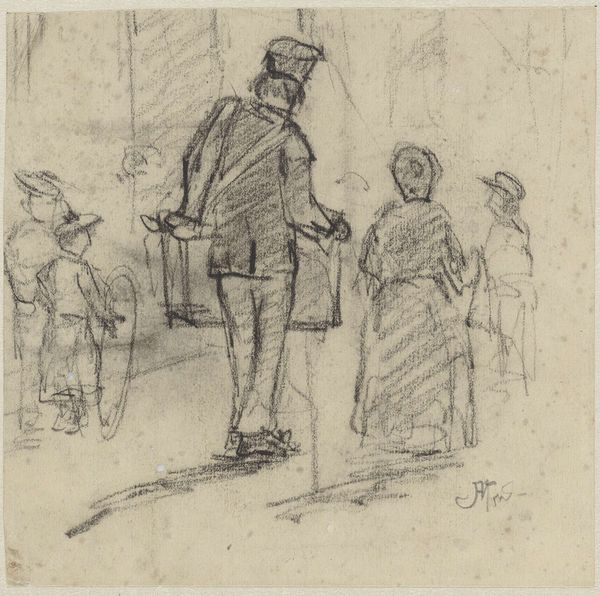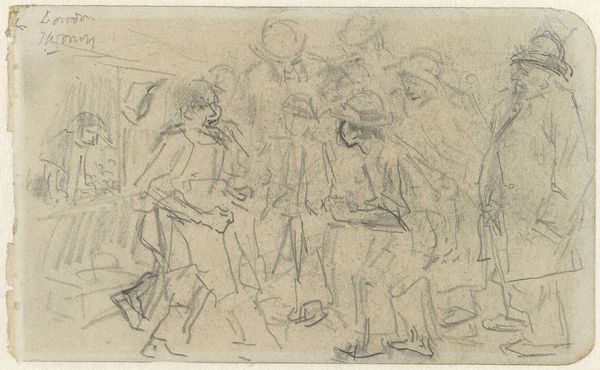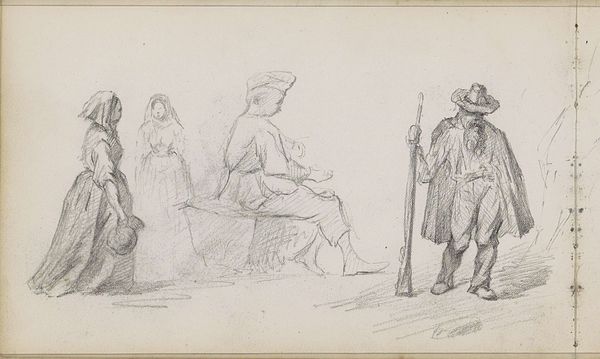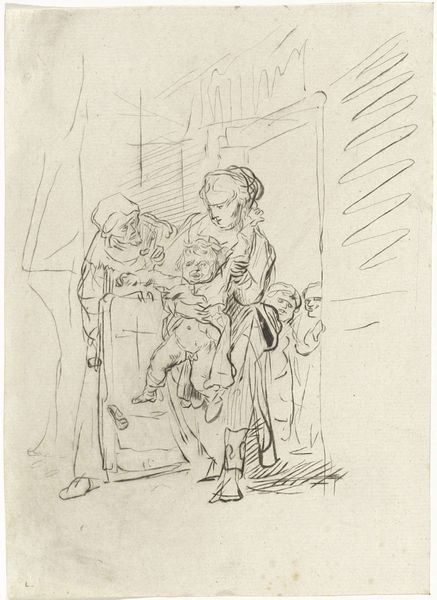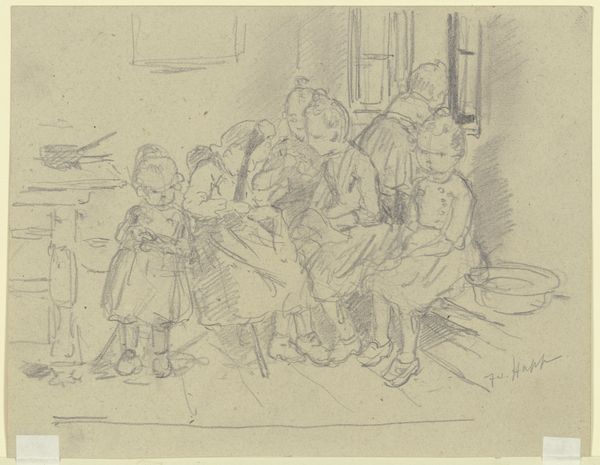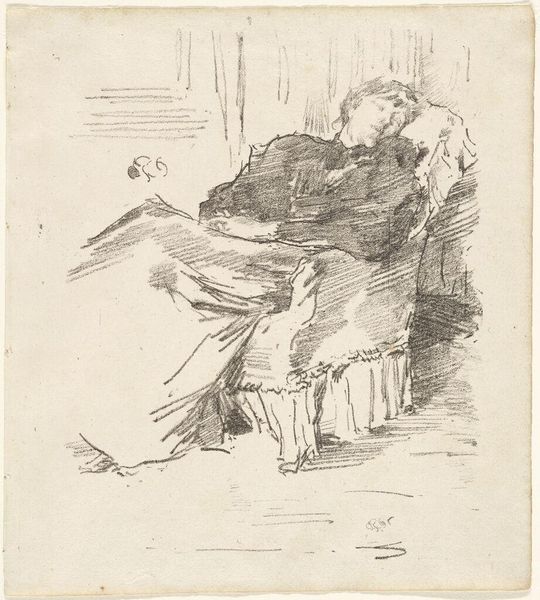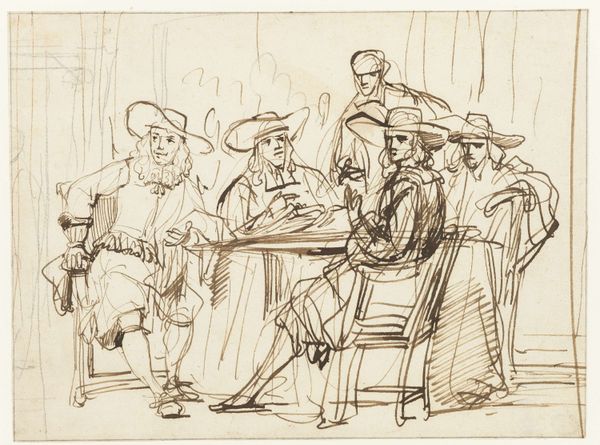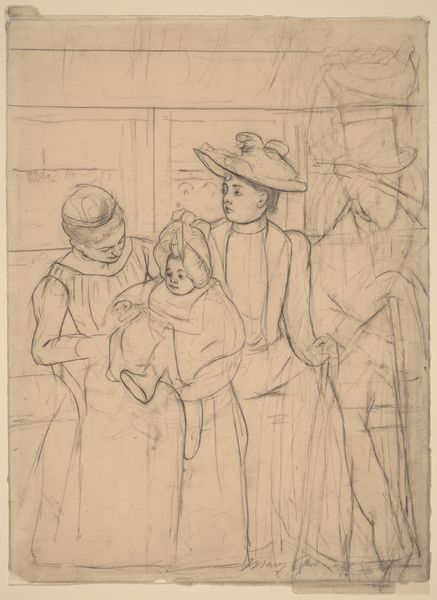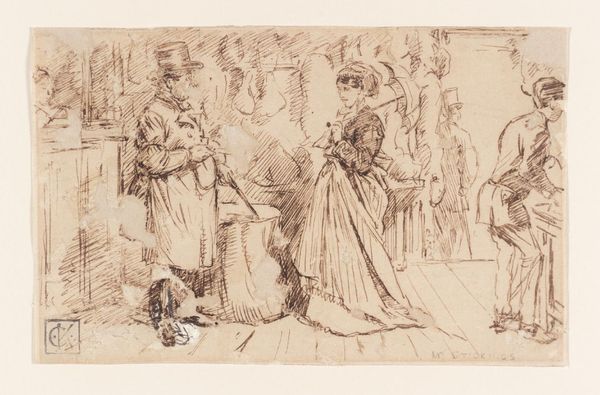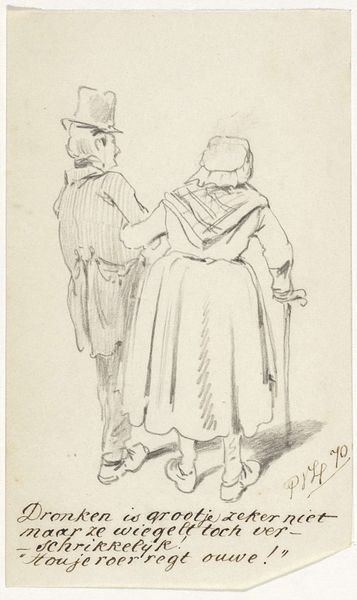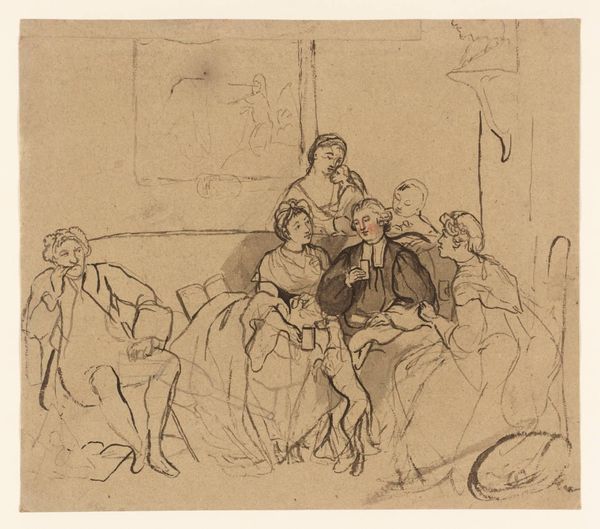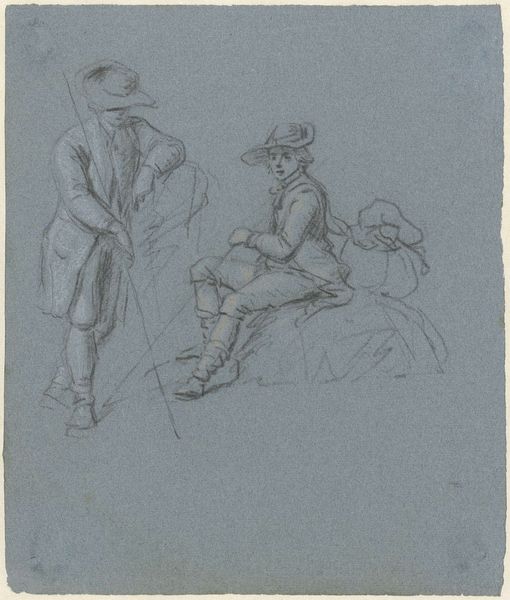
drawing, pencil
#
portrait
#
drawing
#
impressionism
#
landscape
#
pencil
Dimensions: height 291 mm, width 190 mm
Copyright: Rijks Museum: Open Domain
Curator: Welcome. Here we have Jozef Israëls’ "Twee studies van een meisje en een boom in een straat", dating roughly from 1834 to 1911. It's currently housed right here in the Rijksmuseum. Editor: It strikes me as quite wistful. All those gentle pencil lines… It feels very intimate and quiet, like a captured moment of fleeting pensiveness. Curator: Indeed. Israëls was deeply influenced by the Hague School, and this piece embodies their focus on everyday scenes and realistic depictions of light and atmosphere. It echoes Millet's sentimentality, don't you think? A quiet dignity found in the commonplace. Editor: You can see that material process clearly in the build-up of the pencil lines. But look how casually Israëls sketches; he allows some imprecision, like with the windows on that structure—presumably, a house. Are these preliminary sketches of some kind, do you imagine? Were they perhaps preparatory to a finished piece of work? Curator: It seems more like a study capturing the spirit of his subject in different modes. It isn't intended as academic drawing at all. We can see the way social considerations play into how Israëls positioned his models and drew from life, attempting to elevate their status to reflect national aspirations and ideas. Editor: The way he lays down the girl’s dress speaks to the texture of the fabric but it makes me also consider who fabricated these clothes. Did this piece act as promotion, displaying the capabilities of sweatshops or women working from home perhaps? Who would view this image, and for what purpose was it made available? These processes really change how one should assess the piece. Curator: Fascinating considerations indeed, although he doesn’t strike me as consciously using it that way, necessarily. I rather believe this reflects the aesthetic of artistic and bourgeois circles which allowed, if not facilitated the social standing of, those depicted. Editor: Ultimately, it’s a reminder that art doesn't exist in a vacuum. Every mark, every material choice carries layers of history, labor, and intention, whether intended by the artist or not. Curator: Precisely! That contextual framework helps us to understand the nuances in artworks that have broad significance.
Comments
No comments
Be the first to comment and join the conversation on the ultimate creative platform.
